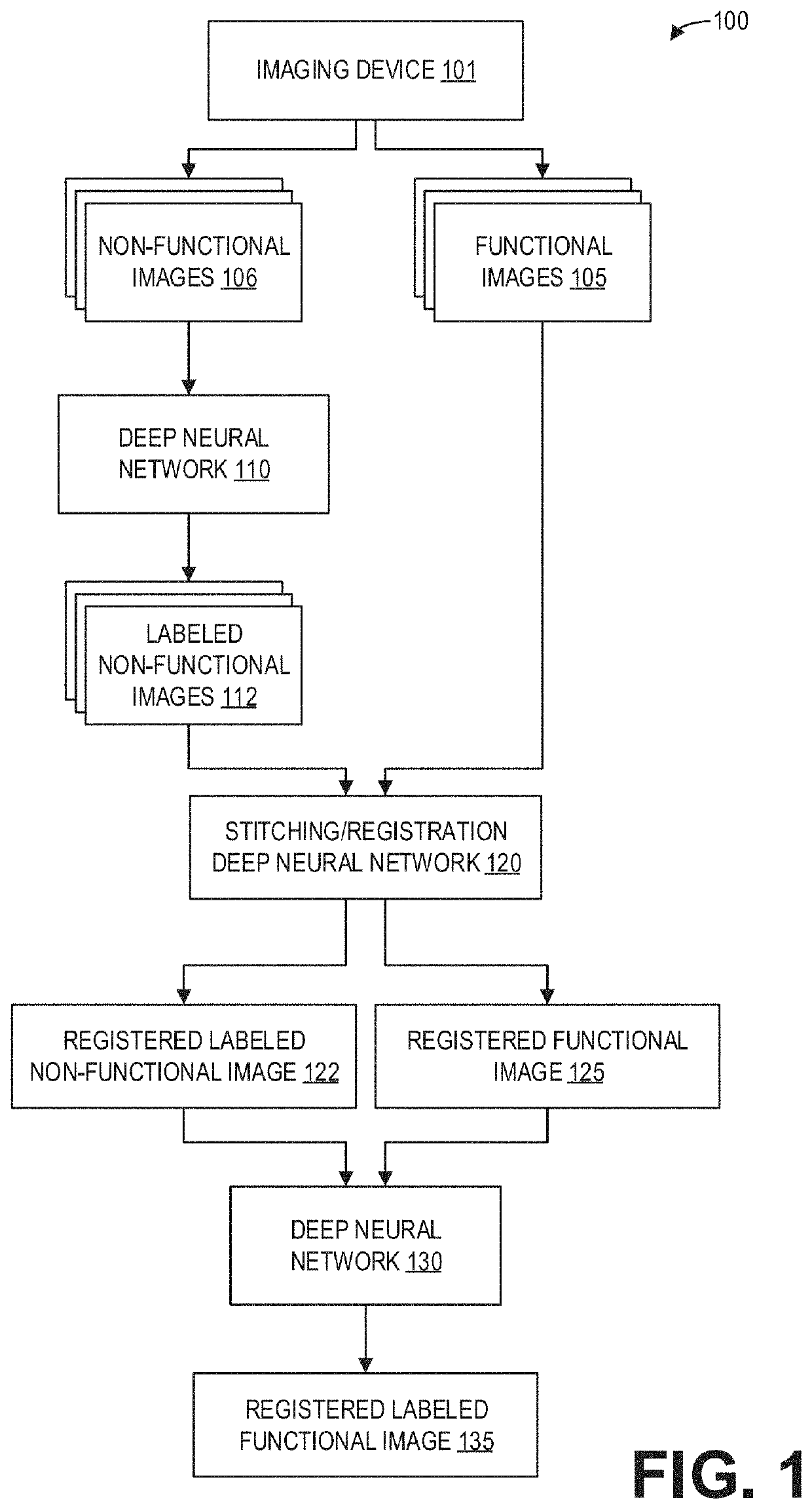Systems and methods for deep learning based automated spine registration and label propagation
- Summary
- Abstract
- Description
- Claims
- Application Information
AI Technical Summary
Benefits of technology
Problems solved by technology
Method used
Image
Examples
Embodiment Construction
[0021]The diagnosis of abnormalities situated around the spine in whole-body imaging scans is challenging. For accurate diagnosis, the spine appearance, shape, and geometry measurements might need to be viewed in all multiplanar reformatted views for abnormality detection. Therefore, proper localization, segmentation, and labeling in all multiplanar reformatted views (e.g., axial, coronal, sagittal, and oblique) would help improve diagnosis by a clinician. However, manual segmentation and labeling of the spine in axial whole-body exams is a challenging task and does not guarantee accuracy. For example, a clinician may find it difficult to identify the spine segments in whole-body anatomical scans riddled by artifacts, intensity inhomogeneity, abrupt non-uniform intensity changes, patient motion, and degenerative changes. Further, in degenerative spine disease, the associated intensity changes due to neuronal compression, and so it is highly challenging to identify and manually label...
PUM
 Login to View More
Login to View More Abstract
Description
Claims
Application Information
 Login to View More
Login to View More - R&D
- Intellectual Property
- Life Sciences
- Materials
- Tech Scout
- Unparalleled Data Quality
- Higher Quality Content
- 60% Fewer Hallucinations
Browse by: Latest US Patents, China's latest patents, Technical Efficacy Thesaurus, Application Domain, Technology Topic, Popular Technical Reports.
© 2025 PatSnap. All rights reserved.Legal|Privacy policy|Modern Slavery Act Transparency Statement|Sitemap|About US| Contact US: help@patsnap.com



